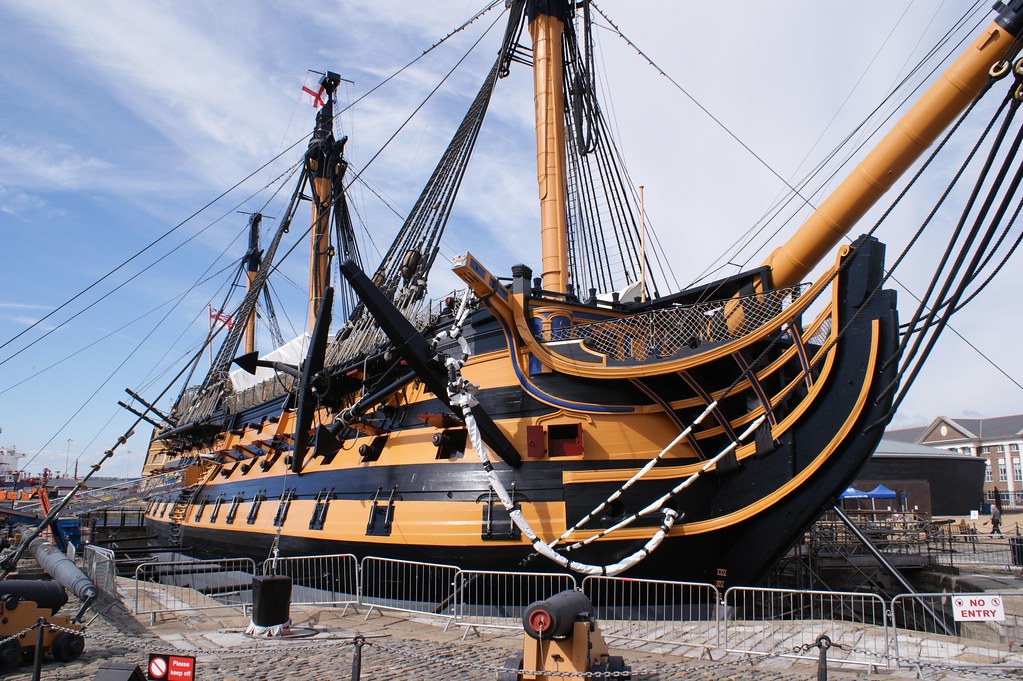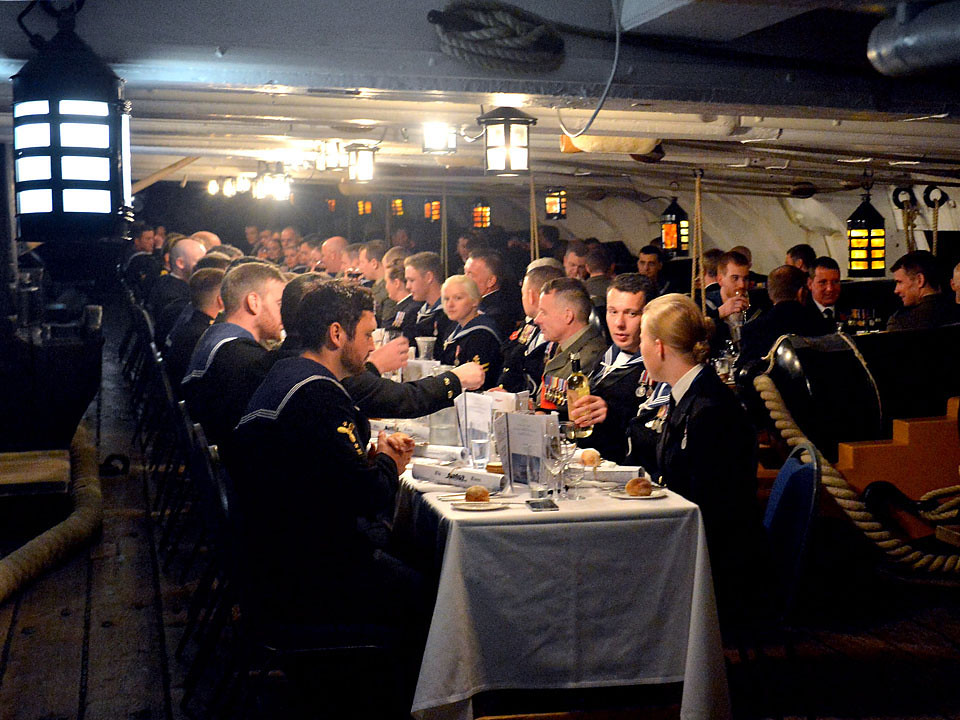
The HMS Victory stands as a proud emblem of British maritime history and naval prowess. Her story, stretching well over two centuries, embodies the spirit of an era when sea battles were game-changers in the theater of war.

Constructed in the mid-18th century, the HMS Victory was one of the British Royal Navy’s most formidable first-rate ships, designed to carry a staggering 100 guns.

Built from the wood of approximately 6,000 trees, predominantly oak, her keel was laid down in 1759, and she was launched in 1765. However, it wasn’t until the American Revolution that she saw action, having previously languished unused due to the end of the Seven Years’ War.

The Victory was a leviathan of the seas, stretching 227 feet in length with an impressive sail area that allowed her to cut through the water at 11 knots.

Throughout her service, she underwent various modifications, but the firepower she carried was always formidable, with a mix of cast iron cannons that could unleash devastation on her foes.

This ship’s illustrious career includes pivotal naval engagements like the First and Second Battles of Ushant and the Siege of Gibraltar.

However, it is her role as Lord Horatio Nelson’s flagship at the Battle of Trafalgar for which she is most celebrated. In that decisive conflict, on October 21, 1805, the HMS Victory cemented her place in history.

Under Nelson’s command, the Victory charged into battle with the immortal signal, “England expects that every man will do his duty,” hoisted for all to see.

In the fierce combat that followed, the Victory took on two enemy ships, and despite the tragic loss of Nelson to a sniper’s bullet, the British emerged victorious.

After Trafalgar, the HMS Victory continued to serve in the Napoleonic Wars until, deemed too old for active service, she was retired to a more stationary role. The public’s affection for this storied vessel was evident when, threatened with demolition in the 19th century, a wave of public discontent led to her preservation.

The love for the HMS Victory prompted campaigns to save her from neglect and decay. The Save the Victory campaign in the 20th century saw her restoration, a labor of dedication reflecting the nation’s reverence for her historic significance.

Despite the setbacks, including damage from a Luftwaffe bomb during World War II, the HMS Victory was painstakingly restored to her former glory, a process completed in time for the bicentennial of the Battle of Trafalgar in 2005.

Now resting in a dry dock at Portsmouth, the HMS Victory stands as the world’s oldest naval ship still in commission. Visitors flock to her decks, eager to walk where Nelson trod and to connect with a tangible piece of history.

Ongoing conservation efforts ensure that this majestic ship, which has braved the tumult of the seas and the ravages of time, will continue to inspire for generations to come.

As we reflect on the HMS Victory’s storied past, it is clear that she is more than a vessel; she is a symbol of resilience, innovation, and the indomitable human spirit. Her legacy lives on, not just in the annals of naval history but in the hearts of those who value courage and the quest for freedom across the seven seas.
Relevant articles:
– Victory | Nelson’s Flagship, Battle of Trafalgar, 1805, Britannica
– HMS Victory: The World’s Oldest Warship Still In Commission, War History Online

